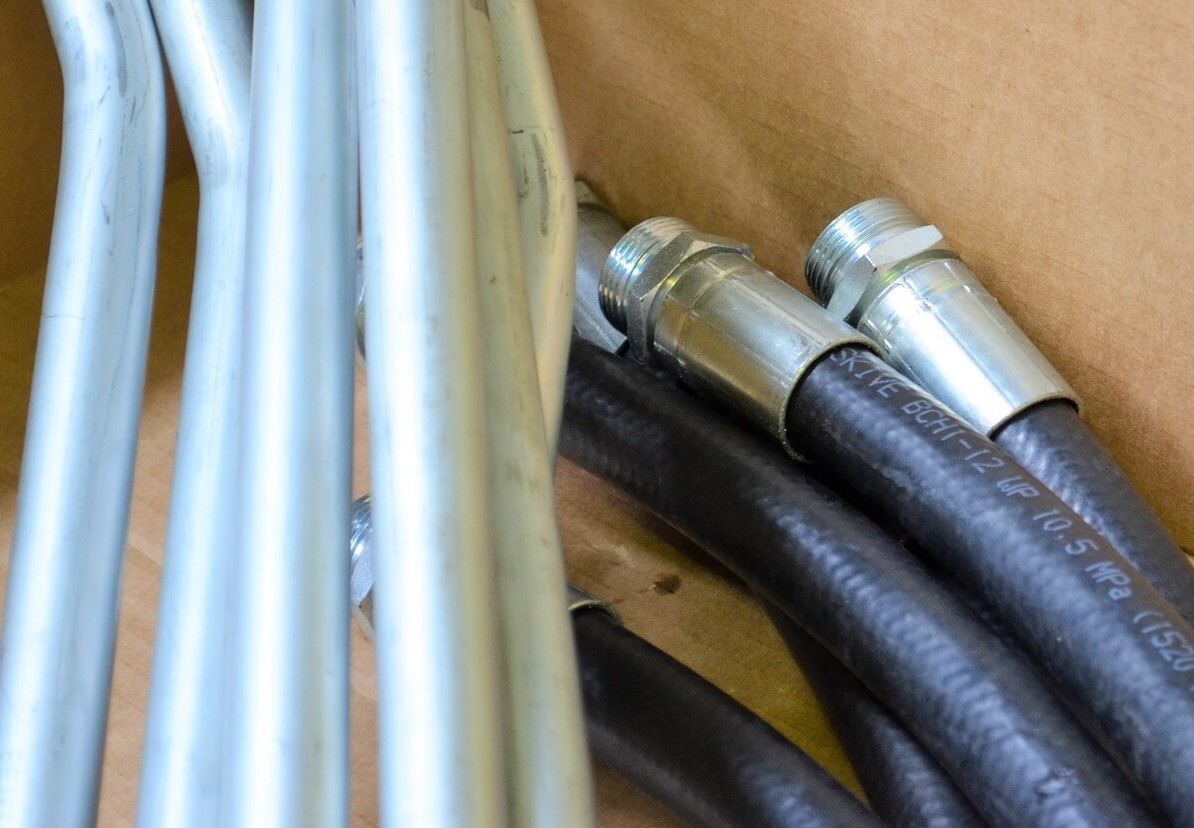Steps for Hydraulic Hose Repair
Repairing hydraulic hoses requires specialized tools and expertise, as hydraulic equipment operates under high pressure, and any failure in the system can lead to serious issues. If the repair is not approached with caution, it may create a hazardous situation.
Hydraulic hoses available at MPH are reliable and durable products; however, continuous intensive use means they will eventually wear out. It is essential to regularly monitor the condition of the hydraulic system and replace components promptly.
Types of Hydraulic Hoses
Hydraulic systems use various hoses and pipes that differ in material, size, and design.
-
Hydraulic Rubber Hoses: These hoses are flexible and pliable, making them ideal for areas where rigid pipes cannot be used. They have a multi-layer structure with steel wire layers between the inner and outer rubber layers. For example, the 1SN DN38 rubber hose has a steel mesh layer and a 38 mm inner diameter.
-
Steel Pipes: These pipes can withstand extremely high pressure and are resistant to wear and mechanical damage. Unlike rubber hoses, they are entirely rigid, limiting their use. They require minimal maintenance.
-
Polyamide and Polyurethane Pipes: These are extremely lightweight and resistant to various chemicals. Their heat resistance varies, and they are typically used in lower-pressure systems.
-
Teflon Pipes: These have exceptional heat and chemical resistance. Their smooth internal surface minimizes friction and prevents contaminants from accumulating. To withstand higher pressure, they are often reinforced with steel wire.
-
Hydraulic Spiral Hoses: This type can have up to six layers of steel wire reinforcement, making it resistant to extreme pressure. It withstands sudden pressure changes and mechanical damage, making it suitable for heavy industrial environments, construction, and mining equipment.
Steps for Hydraulic Hose Repair
Regardless of the hose type, there are general guidelines and steps to follow in the repair process.
-
First, identify the fault. Clean the hoses to spot any cracks or leaks.
-
Before starting repairs, depressurize the equipment to prevent accidents. Shut down the system and open the pressure release valve.
-
Remove the damaged hose using a specialized tool to avoid damaging other parts. Note the exact size and type of the removed hose to ensure proper fit for the replacement.
-
For minor damage, an attempt can be made to repair the hose. In the case of significant damage, replacement is recommended. When inserting the new part, ensure it fits perfectly at every connection point.
-
Before reactivating the system, perform a pressure test, gradually increasing pressure to check the repair's success.
Leave It to a Professional!
Due to the high pressure in hydraulic equipment, maintenance and hydraulic hose repairs should always be entrusted to a reliable technician if expertise is lacking.
For questions about our products or services, please feel free to contact us through any of our channels!


